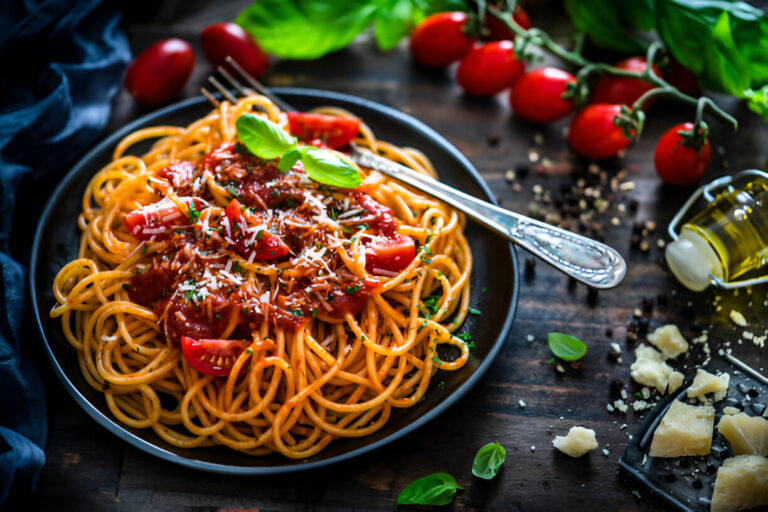Savor the Best Lobster Tail Recipe: Tips & Techniques
Lobster tails are a delectable treat that epitomize luxury dining, making them a favorite for special occasions and gourmet meals alike. With their sweet, succulent meat and impressive presentation, these seafood delights are a standout centerpiece at any dinner table. However, cooking lobster tails correctly is essential to ensure that they retain their incredible flavor and tender texture. Overcooking can lead to a rubbery experience, while undercooking may pose health risks. Whether you’re a novice in the kitchen or a seasoned chef, mastering the art of preparing lobster tails can elevate your cooking game.
In this article, you’ll find a comprehensive guide to understanding lobster tails, their health benefits, and how to select the freshest ones from the market. We will walk you through a detailed lobster tail recipe, covering various cooking methods and tips that will help you create a restaurant-quality dish at home. Additionally, we will explore common mistakes to avoid and answer frequently asked questions, ensuring you feel confident in your lobster tail preparation. Get ready to impress your guests with a dish that is as delightful to eat as it is to serve!

Understanding Lobster Tails
Lobster tails are an exquisite seafood choice, and understanding their types is vital for selecting the perfect one for your dish. The two main categories of lobster tails are cold-water and warm-water lobsters. Cold-water lobsters, such as the Maine lobster, are typically prized for their sweet, tender meat. They thrive in colder Atlantic waters, leading to a rich flavor profile that seafood lovers often seek. Warm-water lobsters, found in the Caribbean and Pacific, tend to have a milder taste and a softer texture, making them a popular choice in many culinary applications.
Within these categories, several varieties stand out. The most sought-after type is the Maine lobster, known for its large claws and exceptional flavor. Other notable varieties include Canadian lobster, renowned for its robust and sweet meat, and spiny lobster, which lacks claws but offers a unique taste and texture. Understanding these differences will help you choose the right lobster tail for your next culinary adventure.
Health Benefits of Lobster Tails
Lobster tails are not only delectable but also packed with a wealth of nutrients. They are an excellent source of high-quality protein, which is essential for muscle growth and repair. Additionally, lobster tails are rich in omega-3 fatty acids, which are known to promote heart health by reducing inflammation and improving blood circulation. These seafood delights also contain important minerals such as zinc, selenium, and vitamin B12, which support overall health and well-being.
Incorporating lobster tails into your diet can yield several health benefits. Regular consumption of seafood, including lobster, can help lower the risk of heart disease, improve brain function, and provide essential nutrients that may be lacking in a typical diet. By indulging in this luxurious treat, you’re not just treating your taste buds; you’re also nourishing your body with valuable nutrients. Enjoying lobster tails in moderation can create a delightful balance between indulgence and health.

How to Choose Fresh Lobster Tails
Choosing fresh lobster tails is crucial for achieving the best flavor and texture in your dish. Here are some essential tips and indicators to help you select the finest seafood for your culinary creation.
Freshness Indicators
When evaluating lobster tails, pay attention to the following characteristics:
- Appearance: Look for tails that have a firm shell, with a vibrant color. Avoid tails that appear dull, dry, or have discoloration.
- Smell: Fresh lobster tails should have a mild, ocean-like scent. A strong fishy odor is a sign that the lobster is past its prime.
- Feel: Gently squeeze the tail; it should feel firm and not mushy. A tail that feels soft can indicate it is not fresh.
Buying Tips
When it comes to purchasing lobster tails, consider the following:
- Choose between live or frozen lobster tails. Live tails will typically offer the freshest flavor but require proper handling and cooking. Frozen tails can offer convenience and still provide great taste if thawed correctly.
- Source your lobster tails from reputable seafood markets or grocery stores known for high-quality products. Many fishmongers can provide insight into where their seafood is sourced.
Preparation of Lobster Tails
Proper preparation is key to enjoying delicious lobster tails. Whether you have selected fresh or frozen tails, follow these steps for cleaning and preparing them for cooking.
Thawing Process (if using frozen)
If you’re using frozen lobster tails, start by thawing them properly. Place the tails in the refrigerator for 8-12 hours before cooking. If you’re short on time, you can submerge them in cold water for about an hour, changing the water halfway through.
Cleaning and Preparing
Once thawed, clean and prepare your lobster tails as follows:
- Begin by rinsing the lobster tails under cold water to remove any debris.
- Using kitchen scissors, carefully cut down the shell of the lobster, starting from the top and stopping just before reaching the end of the tail. Be cautious not to cut the meat.
- Gently pull the shell apart, and if desired, you can carefully lift the meat out slightly for a more impressive presentation during cooking.
Detailed Lobster Tail Recipe
Now that you are prepared, let’s dive into a comprehensive recipe that will guide you through creating mouthwatering lobster tails in your kitchen.
Ingredients
- 4 lobster tails (6-8 oz each)
- 1/2 cup unsalted butter, melted
- 4 cloves garlic, minced
- 2 tablespoons fresh lemon juice
- 1 teaspoon paprika
- Salt and pepper to taste
- Fresh parsley for garnish
- Lemon wedges for serving
Directions
- Preheat your oven to 425°F (220°C).
- Prepare the lobster tails as described in the preparation section above.
- In a bowl, mix melted butter, minced garlic, lemon juice, paprika, salt, and pepper.
- Using a brush, generously coat the lobster meat with the butter mixture.
- Place the lobster tails on a baking sheet, meat side up, and bake in the preheated oven for about 12-15 minutes, or until the meat is opaque and tender.
- Once cooked, remove from the oven and brush any remaining garlic butter over the meat.
- Garnish with fresh parsley and serve immediately with lemon wedges.
Cooking Methods
You can choose different cooking methods for lobster tails, depending on your preference:
- Broiling: Place lobster tails on a broiler pan and broil for 8-10 minutes.
- Grilling: Grill lobster tails for about 5-7 minutes on each side over medium heat.
- Boiling: Boil the lobster tails in salted water for 5-6 minutes per tail.
- Baking: Follow the baking instructions detailed above for an oven-baked option.
Tips for Perfect Lobster Tails
- Monitor the cooking time closely to avoid overcooking.
- Use a meat thermometer to check for an internal temperature of 140°F (60°C).
- Consider marinating the lobster tails for extra flavor before cooking.
Sauce Pairing Suggestions
To elevate your lobster tail dish, consider these sauce options:
- Garlic butter: A classic combination that enhances the natural flavors.
- Lemon butter: A refreshing twist with a citrusy touch.
- Chili garlic sauce: For those who enjoy a bit of heat.
Serving Suggestions
Choosing Side Dishes
Pair your delicious lobster tails with complementary side dishes. Consider:
- Light and fluffy rice pilaf.
- Steamed vegetables, such as asparagus or broccoli.
- A fresh salad with lemon vinaigrette for a refreshing contrast.
Presentation Tips
Presenting your lobster tails beautifully adds to the dining experience:
- Arrange the lobster tails on a platter with fresh lemon wedges and garnish with parsley.
- Consider using large plates and adding a drizzle of sauce on the plate for visual appeal.
Common Mistakes to Avoid When Cooking Lobster Tails
Overcooking
One of the most common mistakes is overcooking lobster tails, which results in a rubbery texture. Keep a close eye on your cooking times and temperatures.
Incorrect Preparation
Neglecting to prepare the lobster tails properly can affect cooking. Always make sure to pre-clean and score the shell to achieve even cooking.
Not Using the Right Tools
Using dull or incorrect knives can lead to mishaps when preparing lobster tails. Invest in good kitchen scissors and a sharp knife for best results.
FAQs
How do you know when lobster tails are cooked?
Lobster tails are cooked when the meat is opaque and firm, and the internal temperature reaches 140°F (60°C).
Can you eat the shell of the lobster tail?
The shell of the lobster tail is not edible. It is used primarily for presentation and can be removed easily before serving.
What is the best way to reheat leftover lobster tails?
The best way to reheat leftover lobster tails is to steam them gently or place them in a preheated oven at 350°F (175°C) for about 10-15 minutes.
Are lobster tails healthy?
Yes, lobster tails are healthy and packed with protein, omega-3 fatty acids, and essential minerals, making them a nutritious addition to your diet.
What are the differences between lobster and shrimp?
The primary differences between lobster and shrimp include their taste, texture, and size. Lobster tends to have a sweeter and richer flavor, while shrimp offers a more delicate taste.
Conclusion
Cooking lobster tails at home opens up a world of culinary possibilities. With the proper techniques and ingredients, you can create an impressive dish that is sure to wow your guests. Don’t hesitate to experiment with flavors and cooking methods to make your lobster tail experience truly your own. Enjoy!

lobster tail recipe
Equipment
- 1 sharp knife
- 1 baking sheet
- 1 small bowl
- 1 brush for applying butter
- 1 zester or grater for lemon zest
- 1 oven or broiler
Ingredients
- 2 pieces lobster tails Approximately 6-8 oz each.
- 4 tablespoons unsalted butter
- 2 cloves garlic Minced.
- 1 tablespoon fresh lemon juice
- 1 teaspoon lemon zest
- to taste salt
- to taste pepper
- optional fresh parsley For garnish.
- optional lemon wedges For serving.
Instructions
- Preheat your oven's broiler. If your broiler has a high and low setting, choose the high setting.
- Carefully cut through the top shell of each lobster tail lengthwise, stopping before reaching the tail fan.
- Gently pull the shell apart and lift the lobster meat out slightly for better cooking and presentation.
- Melt the unsalted butter in a small bowl, then stir in minced garlic, lemon juice, lemon zest, salt, and pepper.
- Place the lobster tails on a baking sheet, shell side down, and brush the garlic butter mixture generously over the exposed lobster meat.
- Broil the lobster tails for about 8-10 minutes, or until the meat is opaque and slightly browned.
- Remove the lobster tails from the oven and let them sit for a minute. Optionally, garnish with fresh parsley and serve with lemon wedges.
- For added flavor, sprinkle some paprika or cayenne pepper over the lobster tails before broiling.







